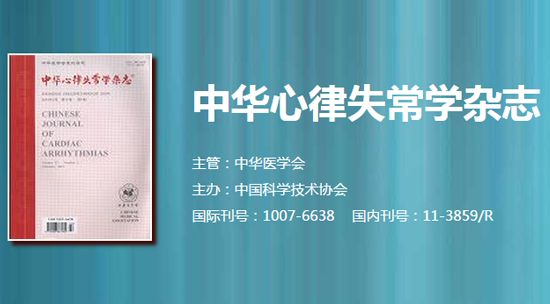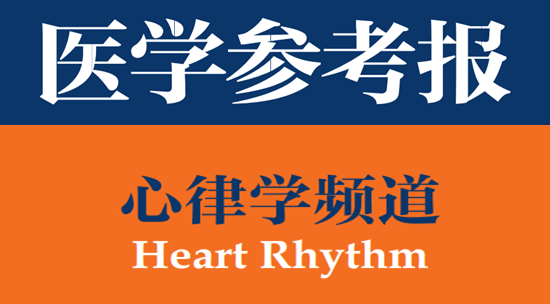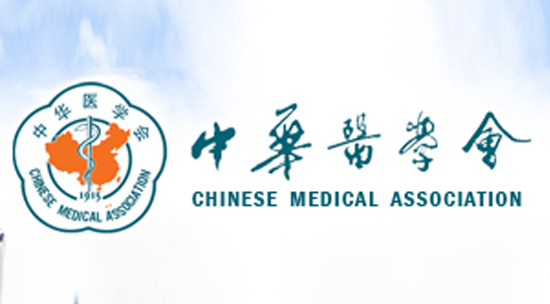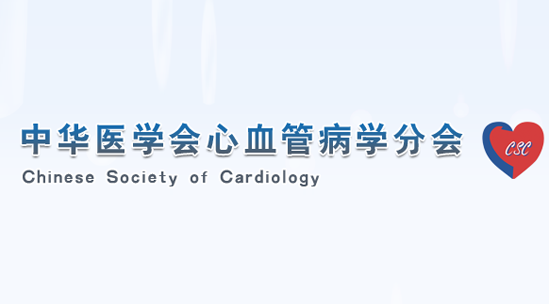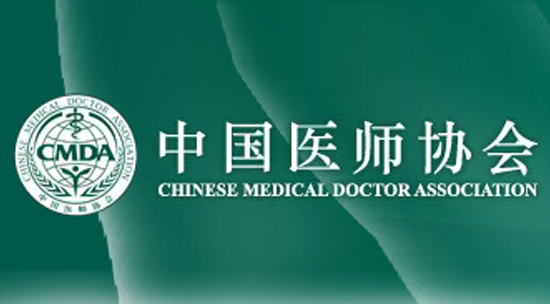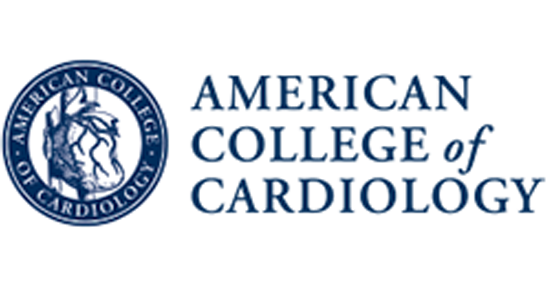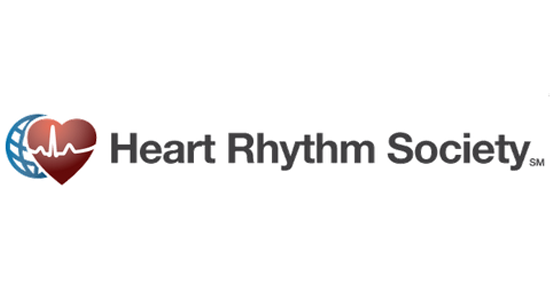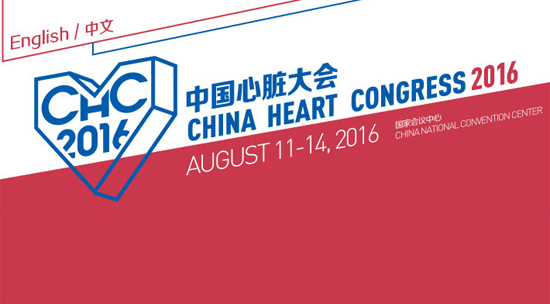HeartRhythm主编—陈鹏生教授语音速递(九月刊 英文版)
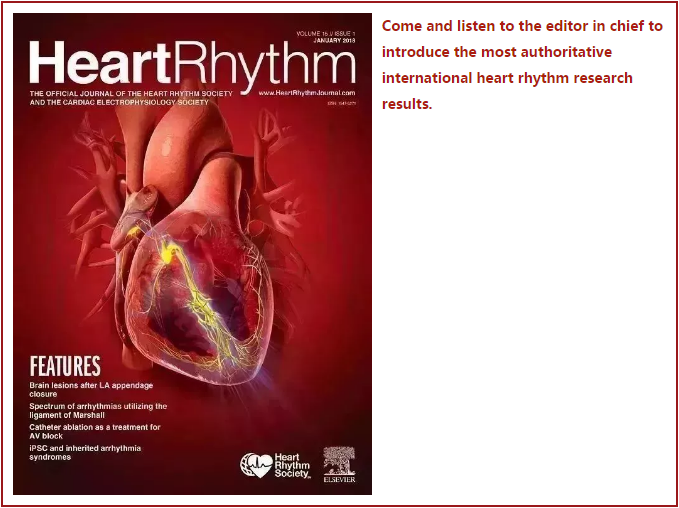
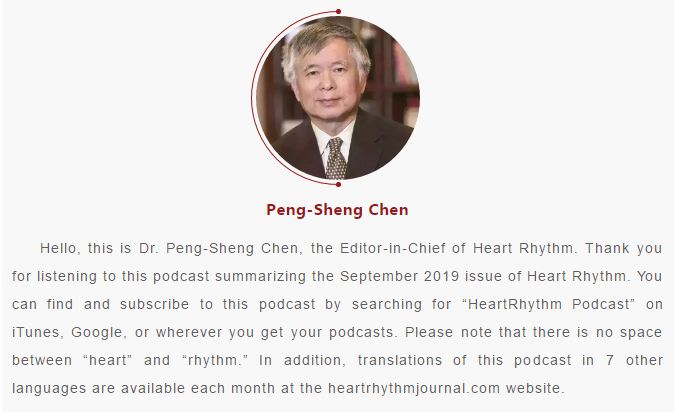
1
This issue of the journal focuses on Atrial Fibrillation. The first article is “Risk Factors and Localization of Silent Cerebral Infarction in Patients with Atrial Fibrillation”by Miki et al from Tohoku University, Japan. The authors enrolled 286 consecutive neurologically asymptomatic patients who underwent AF ablation. All patients underwent MRI before ablation. The authors found that among AF patients, frequently there are silent cerebral infarctions (or “SCI”) localized in the cerebral cortex and cerebellum. They report that the CHA2DS2-VASc score could be useful for screening for silent cerebral infarction. The left atrial abnormality is the most specific marker for cardiogenic silent cerebral infarction. These findings provided useful information for risk stratification of silent cerebral infarction.
2
Next up is a paper by Busch et al from University Medicine Greifswald, Germany. The paper is titled “Relation of IGF-1 and IGFBP-3 with prevalent and incident atrial fibrillation in a population-based study”. Insulin-like growth factor 1 (IGF-1) and its main binding protein IGFBP-3 have been related to several cardiovascular diseases. The authors collected data from 3000 patients in the Study of Health in Pomerania, including 66 with AF at baseline. They found that IGF-1 and IGF-1/IGFBP-3 ratios were significantly lower in individuals with AF than in those without AF. IGF-1 is known to regulate proliferation, differentiation, metabolism, and cell survival in various tissues. It has also been linked to a number of metabolic diseases, including hypertension, obesity and stroke. This is the first study that showed low IGF-1 is linked to AF.
3
Fassini et al from Milan, Italy wrote the following article titled “Cryoballoon Pulmonary Vein Ablation and Left Atrial Appendage Closure Combined Procedure: a long term follow up analysis”. The study included 49 patients followed for two years. Overall freedom from atrial arrhythmia was 60%, and 92% of patients were off anti-thrombotic drugs. The observed annualized stroke and bleeding rate were 1% and 2%, respectively. This long term follow up study shows that concomitant cryoballoon ablation and LA appendage closure procedures appear to be safe and effective. In spite of a high anti-thrombotic drug withdrawal rates, the stroke rate is low.
4
Next up is “Ten-year Ablation Outcomes of Patients With Paroxysmal Atrial Fibrillation Receiving Pulmonary Vein Isolation” by Cheng et al from Veterans General Hospital, Taipei, Taiwan. This study retrospectively enrolled 176 patients with drug-refractory symptomatic PAF who underwent electro-anatomical guided PVI. After a mean follow-up period of 130 months, sinus rhythm was achieved in 58% patients after a single procedure and in 88% of patients after multiple procedures. Patients with enlarged LAs tend to have more recurrences of atrial tachyarrhythmias. In this study, the outcomes of segmental and circumferential PVI were the same. A limitation of the study is that the recurrence of arrhythmia was determined by clinic follow up or interview, which may miss some arrhythmia episodes.
5
The next paper is “Five-year Outcomes in Cardiac Surgery Patients with Atrial Fibrillation Undergoing Concomitant Surgical Ablation Versus No Ablation.” The authors are Osmancik et al from Charles University, Prague. The data came from the PRAGUE-12 study, which was a prospective, randomized clinical trial assessing cardiac surgery with ablation for AF vs. cardiac surgery alone. The study included a total of 207 patients. The authors found that concomitant surgical ablation of AF is associated with a greater likelihood of maintaining sinus rhythm and a decreased risk of stroke than patients who had surgery alone. This study supports the concomitant surgical ablation of AF during open heart surgery.
6
Vlachos et al from University of Bordeaux, France wrote the following article titled“The role of Marshall bundle epicardial connections in atrial tachycardias after atrial fibrillation ablation.” The authors mapped 199 episodes of postablation atrial tachycardia, and found that the Marshall bundle network participated in 30% of reentrant atrial tachycardias. Among them, 80% were terminated by RF ablation and 15% by ethanol injection into the vein of Marshall. These findings show that ablation of the Marshall bundle by RF or ethanol may be required for arrhythmia termination. These findings make the vein of Marshall an attractive target for AF ablation.
7
The next paper is “Rate- and Rhythm Therapy in Patients with Atrial Fibrillation and the Risk of Pacing and Bradyarrhythmia” by Dalgaard et al from Hellerup, Denmark. Among 135,000 AF patients, 9000, or 7%, experienced the composite endpoint of pacemaker implantation, temporary pacing, and bradyarrhythmia hospitalization, during a median follow-up of 3.7 years. The authors found that rate-lowering dual therapy, anti-arrhythmic monotherapy, or combined therapy were positively associated with bradyarrhythmia-related events. The risk was highest in the amiodarone treated patients, during the initial two weeks of treatment, in women, and in the elderly. Bradycardic complications can occur at significant frequencies during both rate control and rhythm control strategies for AF.
8
Next up is “Voltage during atrial fibrillation is superior to voltage during sinus rhythm in localizing areas of delayed enhancement on magnetic resonance imaging” by Qureshi et al from Hammersmith Hospital, London. The authors studied 14 patients with voltage mapping during AF and during sinus rhythm and compared the results with delayed enhancement MRI. They found that the correlation between low-voltage and posterior LA delayed enhancement MRI is significantly improved when acquired during AF vs. sinus rhythm. With adequate sampling, mean AF voltage is a reproducible marker reflecting the functional response to the underlying persistent AF substrate. These important preliminary results will need validation in a larger patient cohort.
9
The next article is titled “Antiarrhythmic Drug Therapy and All-cause Mortality After Catheter Ablation of Atrial Fibrillation: A Propensity Matched Analysis”. The paper was written by Shantha et al from University of Michigan. The authors studied 3,600 consecutive patients with AF. Among them, 62% received antiarrhythmic drug therapy after catheter ablation. They followed the patients for 6.7 years. On multivariate analysis, although the risk of death was not statistically significant between the drug and no-drug cohorts, there was a trend towards mortality benefit with drug therapy regardless of the patient’s rhythm or anticoagulation status. The authors conclude that antiarrhythmic drug use after catheter ablation of AF is not associated with an increased risk of mortality, and in fact may be associated with reduced mortality after AF ablation.
10
Next up is “Ibrutinib promotes atrial fibrillation by inducing structural remodeling and calcium dysregulation in the atrium”. Ibrutinib is a novel anti-tumor drug used in patients with chronic lymphocytic leukemia, which is associated with increased incidence of AF. The authors developed a mouse model of ibrutinib-induced AF and investigated its proarrhythmic mechanisms. In this model, there is increased left atrial mass, significant myocardial fibrosis, calcium handling disorders in atrial myocytes, enhanced delayed afterdepolarization in atrial myocytes, increased CaMKII (pronounce as kam-kinase-2) expression and increased phosphorylation of ryanodine receptor type 2 and phospholamban. These data indicate that the arrhythmogenic mechanisms underlying this model are likely associated with structural remodeling and calcium handling disorders in the atrium. This basic science study helps to understand the mechanisms by which ibrutinib induces AF and suggests that CaMKII inhibition may be a potentially useful therapeutic strategy.
11
Yuan et al from my laboratory [*Dr. Peng-Sheng Chen’s laboratory*] in Indianapolis wrote the following article titled “Subcutaneous nerve stimulation for rate control in ambulatory dogs with persistent atrial fibrillation”. We previously showed that subcutaneous nerve stimulation damages the stellate ganglion and reduces sympathetic output. This method may be useful in controlling the ventricular rate during AF. To test this hypothesis, we prospectively randomized 13 dogs with AF into subcutaneous stimulation and sham stimulation groups. We found that subcutaneous stimulation reduces the ventricular rate and preserves left ventricular ejection fraction, while the sham control group had reduced ejection fraction and no change of ventricular rate. PET/MRI of the dogs’ brains showed enhanced brain stem glucose uptake activity. Because skin is easily accessible, this method may prove useful in the rate control of AF.
12
The next article is a review written by Elbatran et al from St. George's University of London, titled “The rationale for isolation of the left atrial pulmonary venous component to control atrial fibrillation: a review article”. The authors reviewed the embryological origin of the PV and left atrium. They also provided a critical assessment of the anatomical features important to AF ablation.
13
A final article of this AF focus issue is a review titled “Systematic review of biological therapies for atrial fibrillation” by McRae et al from University of Ottawa Heart Institute.Biological therapies that increase or suppress the expression of transcripts underlying atrial fibrillation progression increasingly are being explored to create novel treatment paradigms beyond simply suppressing or destroying tissue. The authors review the preclinical data that support these new biological therapies for AF.
14
.Following these AF-related papers is an article titled “Cardiac Sympathectomy For Refractory Ventricular Arrhythmias in Cardiac Sarcoidosis” by Okada et al from Johns Hopkins University. The authors report a case series of 5 patients with cardiac sarcoidosis and ventricular arrhythmias. The median number of ICD shocks in the 6 months before surgery was 5, which was reduced to 0 following cardiac sympathectomy. Repeat catheter ablation was required in one patient. An additional patient required cardiac transplantation for progressive heart failure. The authors conclude that cardiac sympathetic denervation may be a feasible therapeutic adjunct for patients with cardiac sarcoidosis and refractory ventricular arrhythmias. However, not all patients are responsive to this approach.
15
The next article is “Comparison of the Arrhythmogenic Substrate between Men and Women with Nonischemic Cardiomyopathy” written by Kuo from Taipei Veterans General Hospital, Taiwan and University of Pennsylvania. The authors analyzed 160 consecutive patients, including 59 who underwent cardiac magnetic resonance imaging before the ablation procedure. The authors found that the scar percentage, transmurality, and distribution were similar between women and men with non-ischemic dilated cardiomyopathy. While fewer VTs were induced in women than in men, ablation results were similar. The limitation of the study is that only a minority of patients underwent MRI examinations.
16
Briceño et al from University of Pennsylvania wrote the following article titled “Clinical and Electrophysiological Characteristics of Idiopathic Ventricular Arrhythmias Originating from the Slow Pathway Region”. Of 63 patients with parahisian region idiopathic ventricular arrhythmias undergoing ablation, the slow pathway region was targeted in 12. All patients presented with PVC manifesting LBBB morphology. Ablation was successful in 11 of the 12 patients. One patient required a permanent pacemaker for heart block, but subsequently recovered intrinsic conduction. This study showed that the slow pathway region can be a source of idiopathic ventricular arrhythmias, which can be safely and successfully ablated in most cases using radiofrequency energy. The arrhythmias arising from the slow pathway region manifest unique ECG features. Preoperative recognition of these ECG patterns may be helpful for planning the ablation procedure.
17
Next up is “Algorithm-Based Reduction of Inappropriate Defibrillator Shock: Results of the Inappropriate Shock Reduction wIth PARAD+ Rhythm DiScrimination–Implantable Cardioverter Defibrillator Study” by Ruiz-Granell et al from Valencia, Spain. The PARAD+ algorithm is a proprietary algorithm designed to discriminate supraventricular from ventricular arrhythmias. They enrolled 1013 patients and followed them for 552 days. They found that the annual rate of inappropriate shocks using the enhanced PARAD+ discrimination algorithm alone ranged from 1.0 to 2.1 per 100 person-years in a general population implanted for primary or secondary prevention. A limitation of the study is the absence of a matched control group, but the low inappropriate shock rate is encouraging.
18
Creo et al from Mayo Clinic wrote the following article titled “Patterns of Amiodarone-Induced Thyroid Dysfunction in Infants and Children”. The authors studied a retrospective cohort of pediatric patients who received amiodarone. Of the children who had thyroid function tested, half developed a TSH value above the reference for age. Neonates had the highest median peak TSH values. The authors conclude that neonates and infants receiving amiodarone had more thyroid dysfunction, with greater degrees of TSH elevation, than older children. TSH elevations occurred early, even with short term exposure to amiodarone. Given the concern for brain development and growth in hypothyroid children, these results suggest a need for more rigorous pediatric-specific thyroid monitoring guidelines.
19
This month’s HRS 40th Anniversary Viewpoint was written by Dr Nora Goldschlager, titled “Carpe Diem”. She described her career and her association with the Heart Rhythm society. She noted increased participation of women in the society leadership and in EP laboratories.
20
In addition to the print pages, the journal also have published several documents electronically. The first one is a digital health document titled “Transparent Sharing of Digital Health Data: A Call to Action” by Slotwiner et al. A second is the “HRS White Paper on interoperability of Data from Cardiovascular Implantable Electronic Devices (CIEDs)”. A third one is the “2018 ACC/AHA/HRS guideline on the evaluation and management of patients with bradycardia and cardiac conduction delay”.
I hope you enjoyed this podcast. For Heart Rhythm, I’m Editor-In-Chief, Dr. Peng-Sheng Chen.
